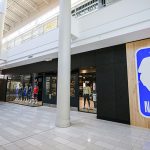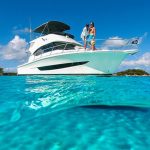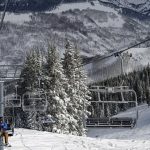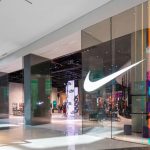As fears of recession and mounting raw material, transportation and labor costs continue to capture headlines across the business landscape, investors and analysts looking for a leg up got some first-hand insight into the current business environment at retail as attendees at Piper Jaffrays 28th Annual Consumer Conference in New York City early last week which featured speakers from a number of vendors and retailers serving the active sports lifestyle market.
 Quiksilver, Inc. used its podium time to discuss the dynamics at play between its three core brands of Quiksilver, Roxy and DC as well as to talk a bit about the owned-retail business it has been in for the past 15 years. Things are pretty much moving along as usual for the Quiksilver brand, though the companys extension into womens is just now hitting shelves.
Quiksilver, Inc. used its podium time to discuss the dynamics at play between its three core brands of Quiksilver, Roxy and DC as well as to talk a bit about the owned-retail business it has been in for the past 15 years. Things are pretty much moving along as usual for the Quiksilver brand, though the companys extension into womens is just now hitting shelves. On the owned-retail front, the company now has over 400 stores in operation accounting for approximately 20% of total apparel and footwear sales for fiscal 2007, or roughly $410 million.
Looking ahead, management felt that gross margins could expand in the 150 basis points to 200 basis points range for the back half, but that SG&A expenses will also grow at a comparable rate. For fiscal 2009, sales are expected to grow slowly, if at all.
 Volcom concentrated on the international business and its recent acquisition of Electric Eyewear during its presentation. Management reported that first-quarter revenue in Europe was $25.2 million, comparing against roughly $17.5 million in sales for the companys distributor in the region last year. Management also reported that the region enjoys a high gross margin rate with first-quarter GM pegged at 58.3% of sales. Operating income was $9 million for Q1.
Volcom concentrated on the international business and its recent acquisition of Electric Eyewear during its presentation. Management reported that first-quarter revenue in Europe was $25.2 million, comparing against roughly $17.5 million in sales for the companys distributor in the region last year. Management also reported that the region enjoys a high gross margin rate with first-quarter GM pegged at 58.3% of sales. Operating income was $9 million for Q1. Looking ahead, the company hinted at similar deals to the one in Europe, where Volcom took over distribution, occurring in Japan and Australia next.
For the Electric Eyewear business, management expects the newly acquired company to be EPS accretive in 2008. Electric has been in operation for eight years and reported 2007 revenues of $23.5 million. The main growth driver that Volcom sees for Electric is in softgoods.
For the first quarter, Electric had revenues of $6.2 million in revenue with margins at the same rate as Europe, 58.3%. Electric saw operating income of $400,000, including non-cash acquisition related charge of $600,000.
The company talked about its owned-retail strategy, noting that they currently have eight domestic doors open. Most recently, the company opened a new store in SoHo in New York City, with plans to open two more doors this year. Internationally, the company operates a store in Hossegor, France as well as six other stores through work with its licensees and distributors.
For the last fiscal year, sales outpaced footprint growth, growing 29% as square footage grew 24%. The company has seen its operating margin grow to 10.2% of sales from 8% of sales in 2001, with expectations that a low-teens margin is possible as the companys square footage grows. Average store volume is about $1.425 million with operating contribution in “the high-teen range.” Generally, new stores will do somewhere between 60% to 70% of mature store volumes and then they ramp up to mature stores over a period of three years.
Footwear is expected to lead category growth for the near future as the business had grown at a slower rate than others, leading to easier comps. Management also expects to benefit from PacSuns departure from the business.
Inventory was said to be down about 7% on a per square foot basis at quarter-end.
In young mens apparel, private label accounted for approximately 25% of sales. The overall apparel business grew by 14% to account for 71% of overall sales.
The companys PacSun.com business grew by 48% in the previous fiscal year to $30 million.
For 2008, apparel is anticipated to drive at least 80% of total sales with an even split between young mens and juniors. Proprietary brands in juniors will be from 50% to 60%, perhaps up to 70% of sales, with young mens at approximately 30%.
“We will certainly dominate in the competitive arena over the next 90 days,” said Joe Gromek, Warnaco Group president and CEO. The Olympic Trials will be held in Nebraska beginning on the 29th of June, and the Fast Skin Laser Racer has broken 38 of 40 world records in six to seven week period of time, he noted. Speedo recently mailed out 330,000 copies of the mailer featuring Olympic-logo product to capitalize on the Olympic fever.
Speedo claims a 65% market share in competitive swimsuits, but a third of Speedo's business is in accessories, including a $40-million goggle business. Speedo has 13,000 points of distribution in the U.S. and the Caribbean, as well as a team dealer network of about 150 serving swim clubs, swim teams and schools in the U.S.
Still, Gromek said the Speedo team continues to focus on margin improvement. “About six months ago, we exited owned manufacturing so we no longer have an own physical manufacturing. We have an outsourced model and this certainly should improve our margins over time,” said Gromek.
Sales for Starter and Danskin are expected to more than double with Wal-Mart in 2009. For Starter, Iconix is also working on bringing on some “major celebrities” and competing for the “best athletes” in the world.
Cole said Wal-Mart's new apparel team “really believes in brands, and they're going to be getting rid of some of what I consider quasi-brands and converting them all to major national brands. So we have been working very closely with them. I personally have been in Bentonville eight times over the last ten weeks.”
Apparently, Iconix is just getting started in this channel. “We do believe that our present business here on down the road will more than double or triple over the next two and three years,” added Cole.
>>> These deals are raising eyebrows. Other competing vendors that spoke with SEW expect that sooner rather than later OP will be the #1 brand of action sports apparel sold at retail.
In the action sports and boys' business, the Gotcha launch in 100 Kohl's stores has been “very successful,” and Perry Ellis will be expanding to an additional 300 doors for Spring 2009. Redsand continues to be one of the top sellers at regional department stores such as Belk's, and has increased penetration in Macy's West's. Original Penguin boys will start shipping this month at major specialty retailers and luxury stores such as Barney's, Bloomingdale's, Fred Segal and Nordstrom's.
The golf business, which is driven by performance knitwear, continues to exceed internal plans. Golf grew in Q1 by 50%, driven by the PGA Tour and Grand Slam brands at JC Penney and Kohl's, which respectively had 8% to 12% sell-through on a weekly basis in Q1.












